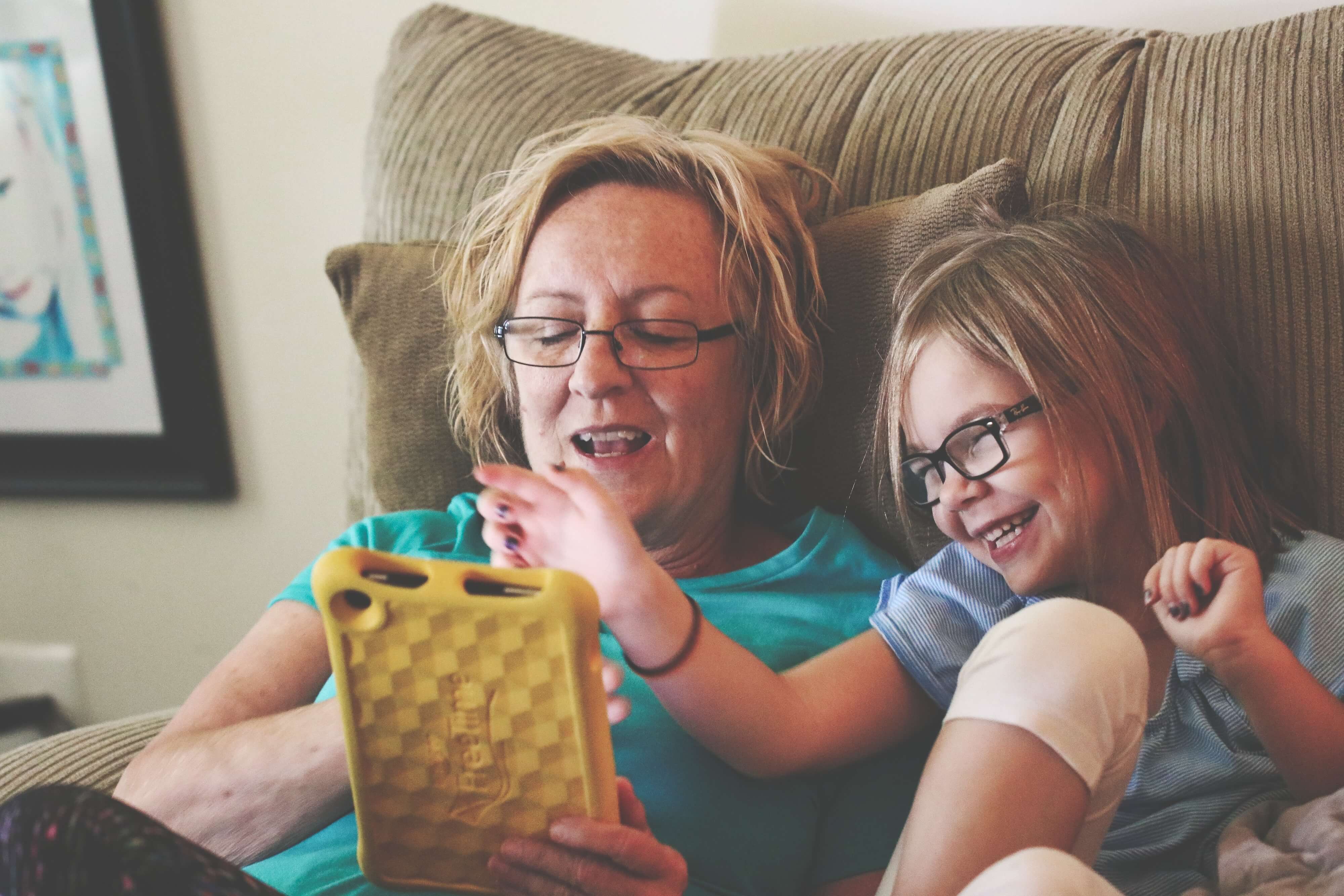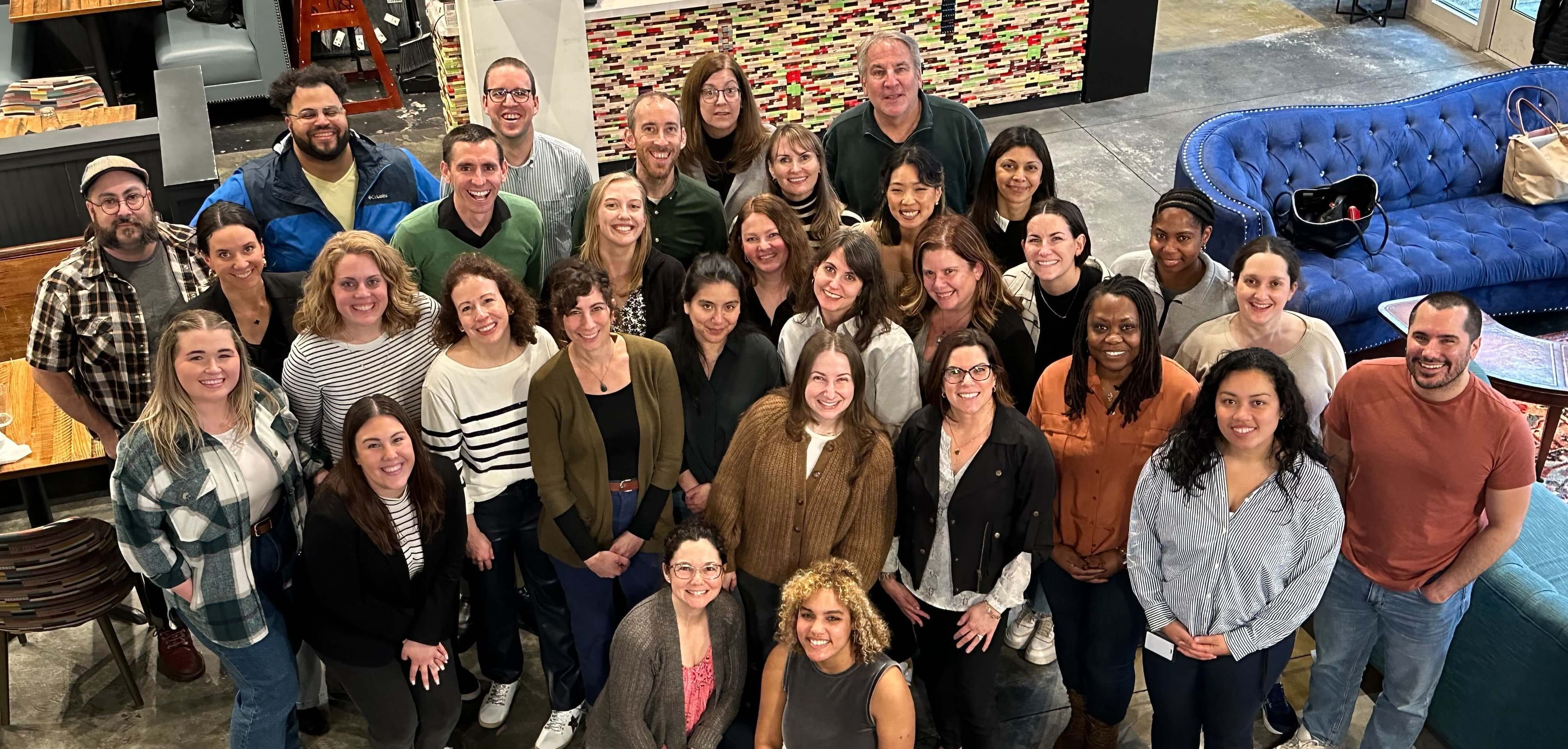Want to Help Your Students Achieve Their Dreams? Start with Their Habits
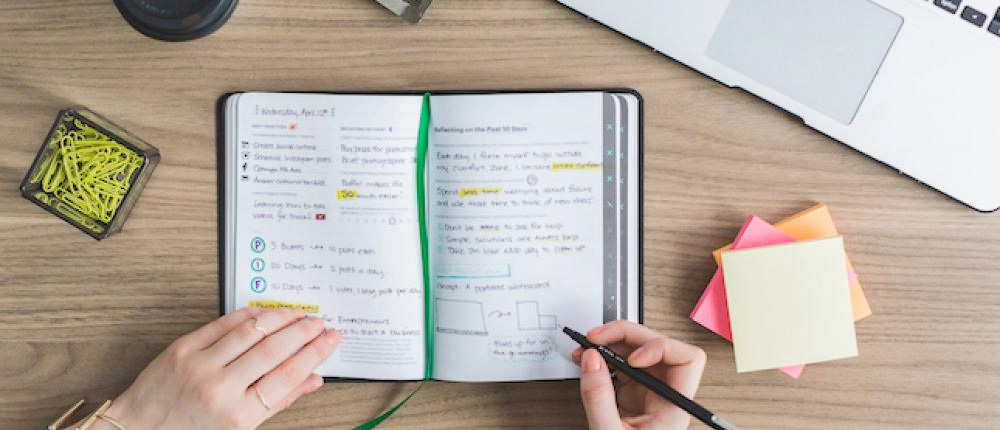
We can empower students by helping them recognize that success is not the result of a single decision but rather the accumulation of repeated behaviors. Routines that support our health, productivity, and happiness facilitate the incremental progress necessary to achieve our goals. In other words, some of the most important decisions students will make about their lives are what their habits will be.
Many of our habits can feel out of our control, but when we learn how they operate, we can nurture ones that support our goals and drop those that interfere with them. Any automatic behavior, whether it has a positive or negative impact on our lives, can be mapped to a habit loop. A cue starts the loop. It can be anything that reminds us of doing the habit, like a certain feeling, time of day, a place, people we’re with, or what we did moments before. It leads to the behavior, which is the action of the habit. The behavior provides some sort of satisfaction, which is why we repeatedly engage in it. In an everyday example, if you want to nurture the habit of eating a healthy breakfast every morning, the cue could be washing the dishes the previous night, which prompts the behavior of assembling the ingredients for overnight oats. In the morning, in addition to enjoying tasty food, you’d also get the satisfaction of energy to sustain you until lunchtime.
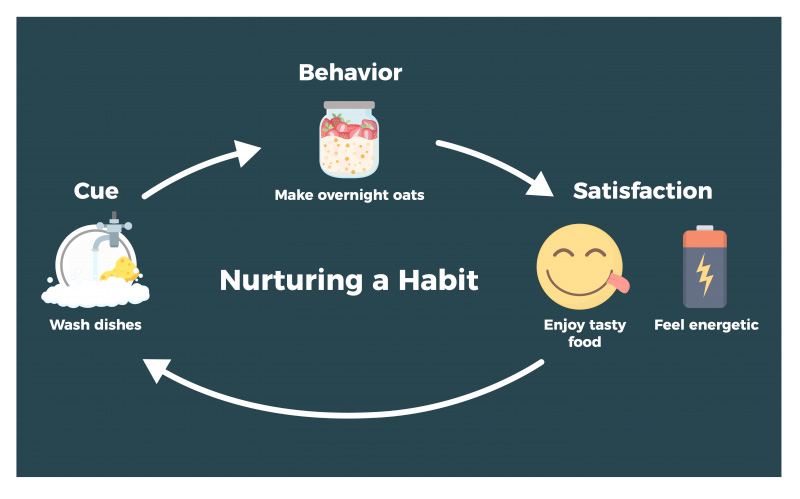
When we take a close look at problematic habits we want to eliminate, we see that we get a sense of satisfaction from them too, but it’s usually fleeting and followed by negative side effects. In another example, imagine you tend to wait until the weekend to start your most dreaded task, grading papers. Maybe the habit operates like this: the cue of collecting papers from your students prompts the behavior of tossing them on top of the catch-all “to-do” pile on your desk. It gives you the satisfaction that the papers are easy to find and they’re also out of your way during class. But there’s a negative side effect: procrastinating on grading ruins your weekends. When you only have a vague thought in the back of your mind that you need to get around to grading “soon,” you let the pile linger for several days, but then end up feeling the pressure to give students timely feedback.

Of course, as a teacher, you accept that you’ll frequently have to do some work beyond the school day, but it’s disheartening when it takes over your best opportunity to recharge after a busy week. So to crush that habit, the same cue can prompt a different behavior: using a file management system that assigns a specific time during the week to grade those papers, like “7th period prep” or “Wednesday, 2:30-3:30.” It still provides the same satisfaction of keeping the papers organized, but chunking the task in a visible way makes it more likely you’ll consider it an appointment you have to keep so you’re able to enjoy your weekend.
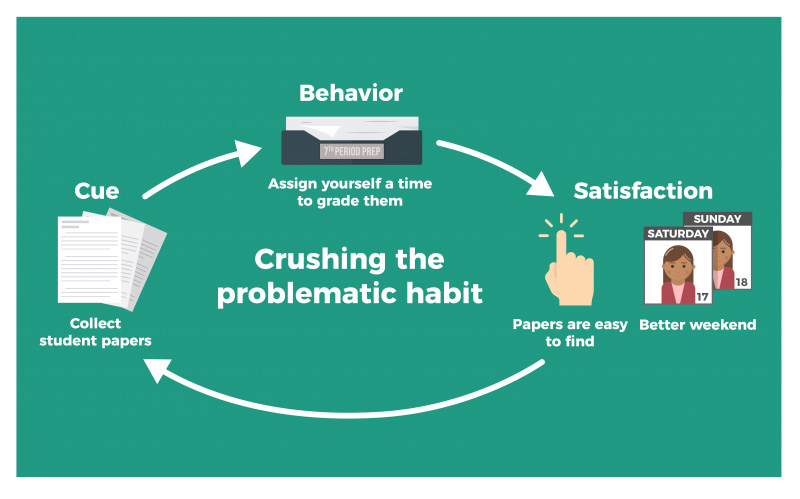
When we diagram a habit loop, it takes us beyond merely recognizing a habit that could help us achieve our goals to making a specific plan to enact it. So when students tell us about their dream jobs, we can show our support by teaching them how to nurture habits that will lay the foundation for doing the kind of work that interests them. Many career-related habits (for example, attending an industry networking event each month) wouldn’t make sense for teenagers to approach. However, success in nearly any profession depends on focus and energy, so students might value the opportunity to work on commonplace habits that promote better sleep, health, and productivity.
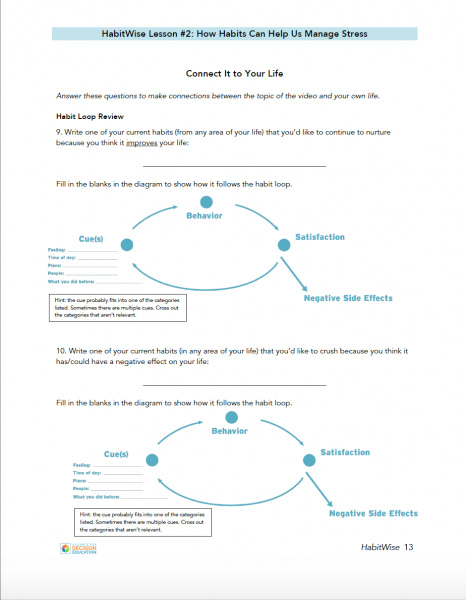
Teachers can use the free resources in the Alliance for Decision Education’s HabitWise program to teach students how they can use the habit loop to manage stress, enhance their health, boost their productivity, and maintain positive relationships. HabitWise adapts insights from Charles Duhigg’s The Power of Habit and Gretchen Rubin’s Better Than Before. The animated videos, worksheets, and extension activities can be adapted to any schedule, and students can gain an in-depth understanding of how their habits impact their lives when they use the Independent Habit Project materials to track and analyze their behaviors.
Your students may change their career goals multiple times during the school year. What students learn about nurturing habits can transfer to their updated goals, and no matter what they ultimately decide to pursue personally and professionally, knowing how to stay in control of their habits will help them shape rewarding lives.
